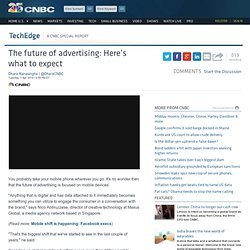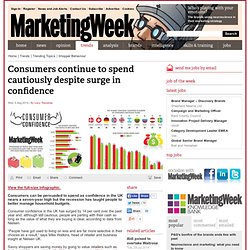

Steve Jobs on marketing and passion. Inspiration Gallery #099 – Serious ads. 40 Witty Campaign Posters for a Cause. Non-profit organizations use posters to deliver a particular message.

These help inform people about current issues, problems and even the possible consequences of their actions. With a sentence that contains strong words or images, these posters give more impact than common commercial posters. To give you an idea, here are 20 sample campaign posters to provoke your imagination. Enjoy! Wildlife is becoming harder to find in Vietnam. Winter. Who are the real monsters? When they speak, we listen. Shit is not a cool band. Say no to child labor. Can you treat yourself better than your doctor? Nothing we do will ever bring them back. Please don’t dive with white sharks. All under 25 who are sexually active should test for Chlamydia every year and avery time they change partner. For some people, life is that expensive.
Preparing today reduces the consequences of disaster tomorrow. Two thirds of college students in Mississippi don’t smoke. Please clean up after your dog. One mistake is all it takes. The future of advertising: Here’s what to expect. Rob Jonas, global chief revenue officer at PubMatic, which allows websites and media publishers to increase the revenue they generate from advertising through programmatic buying or real-time bidding, said he expects to see more development in this area.

"It's easy to target a piece of advertising when you know someone's at a specific location but some of the really interesting things I've seen is looking at patterns of behavior and movement from a mobile device and using that to predict behavior," said Jonas. "That predictive data could be more powerful than reactive data. There are companies looking at it, has it received main stream adoption? Not yet -- will we get to that point? Absolutely," he said. Location, location, location Alongside advertising based on predictive behavior is a focus on developing technology that allows advertising to be targeted at where a person might be at a certain time, at the supermarket for instance. Google predicts future of ads in cars, fridges, watches – and thermostats.
Google says it foresees a future of advertising a few years from now in which they could appear on anything from thermostats to refrigerators to car dashboards and watches.

The official remark that such devices could soon be serving "ads and other content" appears in a formal filing to the US Securities and Exchange Commission (SEC) made in December 2013 but only just released. But it drew a quick rebuttal from Tony Fadell, chief executive and founder of Nest, which makes internet-controlled thermostats and was acquired by Google in January for $3.2bn. "Nest is being run independently from the rest of Google, with a separate management team, brand and culture," Fadell told the news site Re/Code.
"We have nothing against ads - after all Nest does lots of advertising. Digital Trends To Watch For In Advertising. Advertising for fashion industry. Consumers continue to spend cautiously despite surge in confidence. View the full-size infographic.

Consumers can be persuaded to spend as confidence in the UK nears a seven-year high but the recession has taught people to better manage household budgets. Consumer confidence in the UK has surged by 14 per cent over the past year and, although still cautious, people are parting with their cash so long as the value of what they are buying is clear, according to data from Nielsen. “People have got used to living on less and are far more selective in their choices as a result,” says Mike Watkins, head of retailer and business insight at Nielsen UK. Online gets personal. View the full-size infographic here.

For brands toying with online personalisation strategies new research shows there’s an increased appetite for this content, however privacy concerns still exist. Consumers are craving more personalised online content, according to new research from Yahoo, but this comes with several caveats around control and privacy. The study of 6,000 people aged from 13 to 64 finds that awareness of online personalisation activity is high and respondents believe the practice brings relevance and efficiency to their reading or experience of content.
Almost 60 per cent of consumers are aware that personalisation is applied to written material online, while two-thirds understand that it also affects what they watch and listen to. The appetite for relevant content is high with 78 per cent of consumers expressing a desire for some kind of personalisation. Basis of activity However, Owen says there must be limits to personalisation, particularly in retail. Consumer mood. Ads.